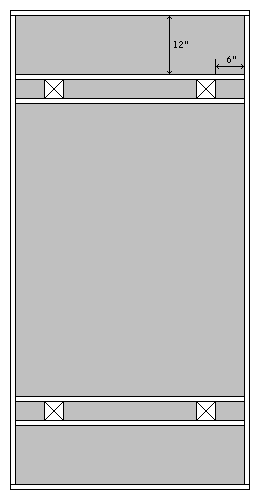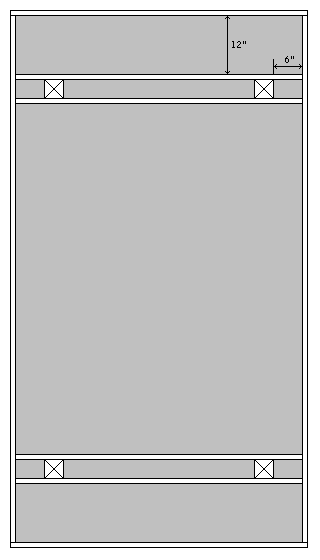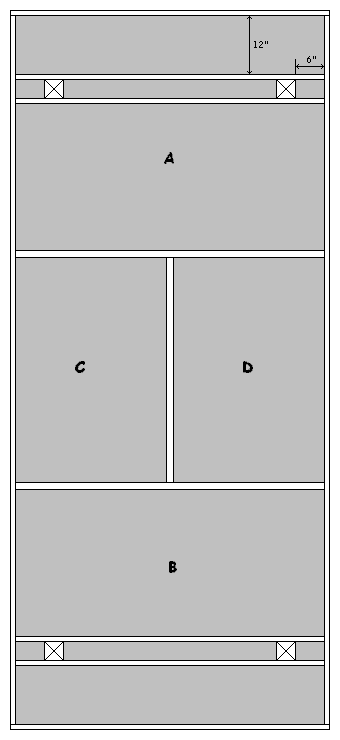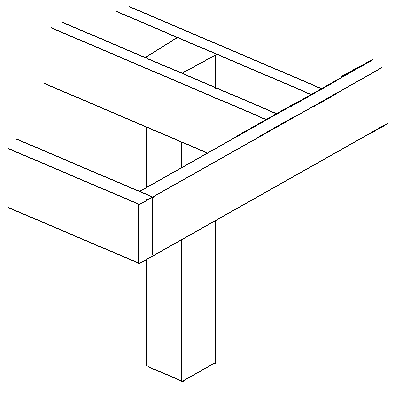Table Construction
Tribute Site |
|
|
| 36" x 80" Table |
|
|
|
The first table described here is the easiest to build. It employs a standard 36" x 80" solid core exterior door as the base with a pair of folding banquet table legs attached to the underside. |
|
|

|
|
|
| 4' x 8' Table |
|
|
|
The 4 x 8 foot table described here is probably the most popular size for an HO Slot Car Racing layout. It uses stock lumber sizes available at any good lumber yard or building supply center. |
|
|

|
|
|
| 4' x 12' Table |
|
|
|
The 4 x 12 foot table described here is the most popular size for an HO Slot Car Racing club layout. It uses stock lumber sizes available at any good lumber yard or building supply center. |
|
|
|
Construct the table frame as illustrated below. The butt joint between the 4x4 and 4x8 foot plywood sheets requires a 2x4 frame cross brace. For a smoother and quieter running race track glue the optional sheets of soundboard (Homasote) to the top of the table. This will greatly reduce the click-clack sound that plastic track sections make when mounted directly to a wooden table top. |

|
|
|
| 5' x 9' Table |
|
|
|
The 5 x 9 foot table described here is based on a single sheet of plywood used to construct a standard-sized Ping-Pong table. If your local lumber yard or building supply center does not carry this size of plywood check the Yellow Pages under Plywood for a supplier that does. |
|
|

|
|
|
| 5' x 10' Table |
|
|
|
The 5 x 10 foot table described here is also based on a single sheet of plywood. If your local lumber yard or building supply center does not carry this size of plywood check the Yellow Pages under Plywood for a supplier that does. In some area of the country 5 x 5 foot plywood sheets are available. Two of these smaller sheets can be combined to form a 5 x 10 platform if full sheets are not available. |
|
|
|
Note If your local building supply store or lumber yard does not have 5x10 foot plywood sheets they may sell 5x5 foot sheets instead. Two of these sheets can easily be combined to create a 5x10 foot table. |

|
|
|
| 5'4" x 12' Table |
|
|
|
If you have the room for a larger HO Slot Car layout this is a good table to build. It uses two 4' x 8' pieces of plywood cut in such a way as to eliminate any wasted material. A table of this size can easily accommodate a 4-lane racing layout with lap lengths of 60 to 75 feet. See the Layouts section of this web site for several racing layouts that will fit on this table. |
|
|

|
|
|

|
|
|
| Construction Techniques |
|
|
|
The tables described in this section can all be built using simple hand tools. A miter box should be used to cut all dimensional lumber to the exact sizes required for the frame. This will guarantee that your saw cuts are square and true. See the Construction section for detailed photographs of the table building process. |

|
|
|
|
Do not use composition board or MDF in place of plywood for the table top. |
|
While MDF is less expensive than plywood it will invariably break or chip with age. Invest in plywood, it is well worth the slight added expense. |